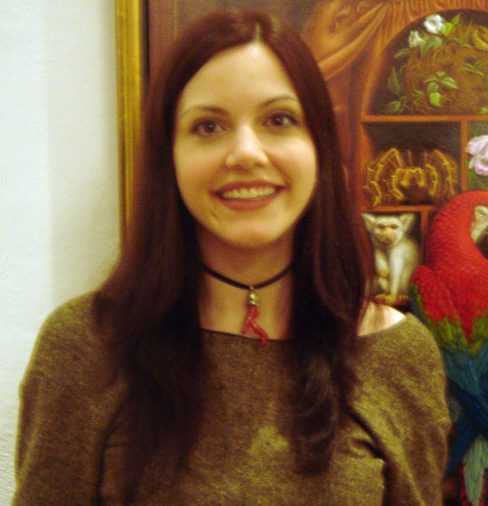Exhibitions
Solo Exhibitions
2020: Nature Vive, Christuskirche, Cologne
2011: The Golden Toad, Roq La Rue Gallery, Seattle
2010: Reliquaries, Strychnin Gallery, Berlin
2008: Waldkammer, Strychnin Gallery, Berlin
2006: Desires Distilled, Fuse Gallery, Manhattan, NY
Selected Group Exhibitions
2020:
Anatomy of a Collection: Recent Acquisitions and Promised Gifts. Whatcom Museum, Bellingham, WA
Spring Surreal, Stone Sparrow Gallery, NYC
L.A. Art Show. Courtesy Copro Nason Gallery
2019:
Guillermo del Toro: At Home with Monsters. Museo de las Artes Universidad de Guadalajara
BLAB! Copro Nason Gallery, Santa Monica, CA
Fêlures et Lumière, Atelier Gustave, Paris
2018:
After Audubon: Art, Observation, and Natural Science. Nevada Museum of Art, Reno, NV
Endangered Species: Artists on the Front Line of Biodiversity. Whatcom Museum, Bellingham, WA
Guillermo del Toro: At Home with Monsters. Art Gallery of Ontario, Canada
Maske und Maskerade. Bernd and Gisela Rosenheim Foundation, Groß-Umstadt, Germany
Aquamarine. Roq La Rue Gallery, Seattle, WA
2017:
Guillermo del Toro: At Home with Monsters. Minneapolis Institute of Art
Special Exhibition of Biodiversity. Chia-Yi Municipal Museum, Taiwan
2016:
Guillermo del Toro: At Home with Monsters. Los Angeles County Museum of Art
2014:
100 Painters of Tomorrow Book Release Exhibition. Christie’s, London
100 Painters of Tomorrow. Beers Contemporary Gallery, London
2013:
The Art of the Obsessions Collective. Zebrastraat, Ghent, Belgium
Otherworld. Roq La Rue Gallery, Seattle
Die Wunderkammer: Objects of Virtue. Republic Worldwide, NYC
The Armory Show, NYC. Courtesy Richard Heller Gallery
Illustrative 2013. Direktorenhaus, Belin
2012:
Art Miami, Courtesy Dean Project Gallery, NYC
Freak Antique: Contemporary Art Curios. Delaware Center for the Contemporary Arts
Lush Life 4. Roq La Rue Gallery, Seattle
Visionaries. Queensborough Community College Museum
Death and the Maiden. Roq La Rue Gallery, Seattle
2011:
Obsessions: Artists of Extreme Interest. Curated by John Zorn. Cavin-Morris Gallery, NYC
Lush Life 3. Roq La Rue Gallery, Seattle
Art 21 Fair. Cologne, Germany
2010:
Art 21 Fair. Cologne, Germany
Draw. Museo de la Cuidad de Mexico, Mexico City
Scope Art Fair, Basel, Switzerland
Lush Life II. Roq La Rue Gallery, Seattle
2009:
Art 21 Fair, Cologne, Germany
Contemporary Icons: Tempera. Westfield State College, MA
Whaleless. Civic Museum, Reggio Emilia, Italy
Lush Life. Roq La Rue Gallery, Seattle.
2008:
Art 21 Fair, Cologne, Germany.
Ab Ovo: Selected Painters in Egg Tempera. Clement Gallery, Troy, NY
2007:
Art 21 Cologne, Germany.
Kings, Queens, and Childhood Dreams. Strychnin Gallery, London.
2005:
Art of the New Movement. Pop Art Studios, Miami FL Curated by Francesco LoCastro
The Inner Eye: Selected Works from the Society for Art of Imagination. InterArt Gallery, New York City
Sacred Geometry. OnSix Gallery, San Francisco. Curated by David D’Andrea

